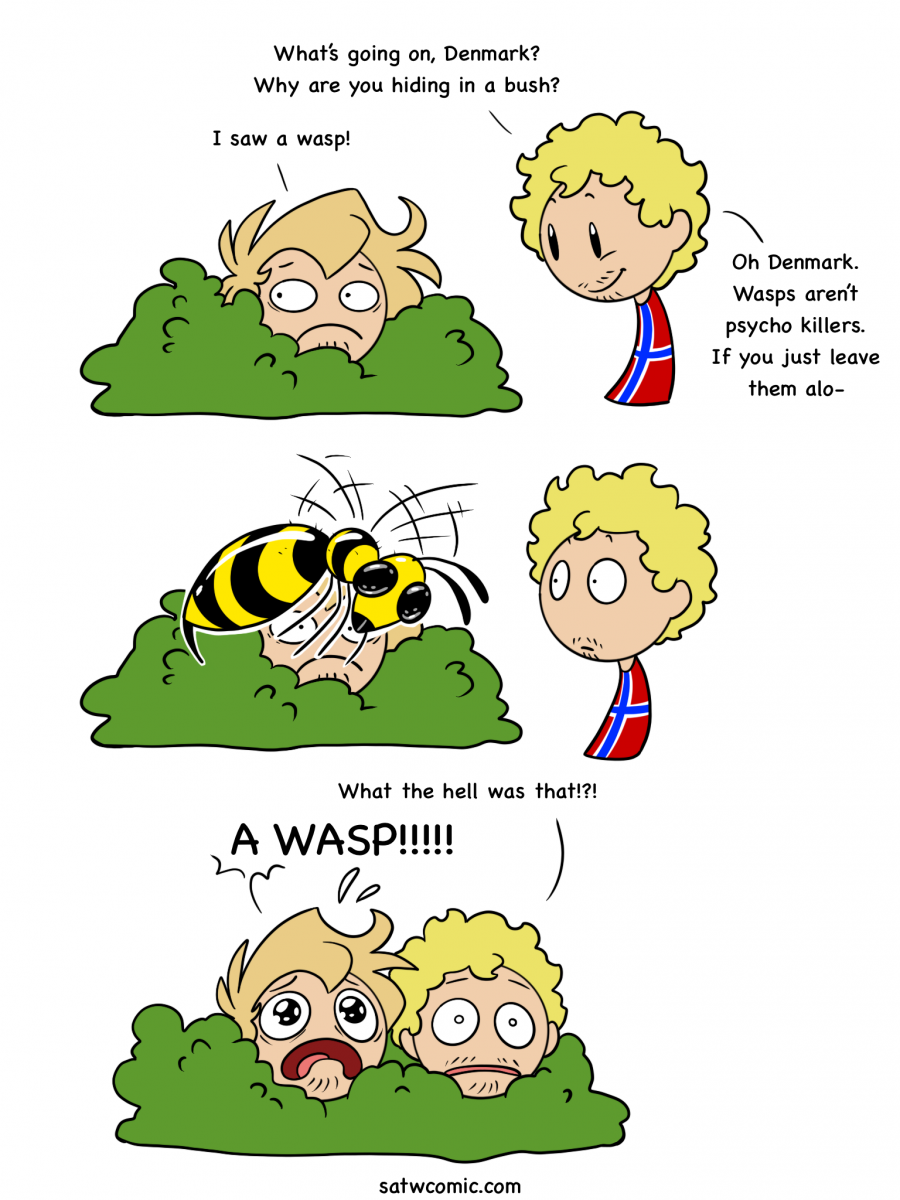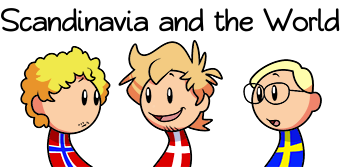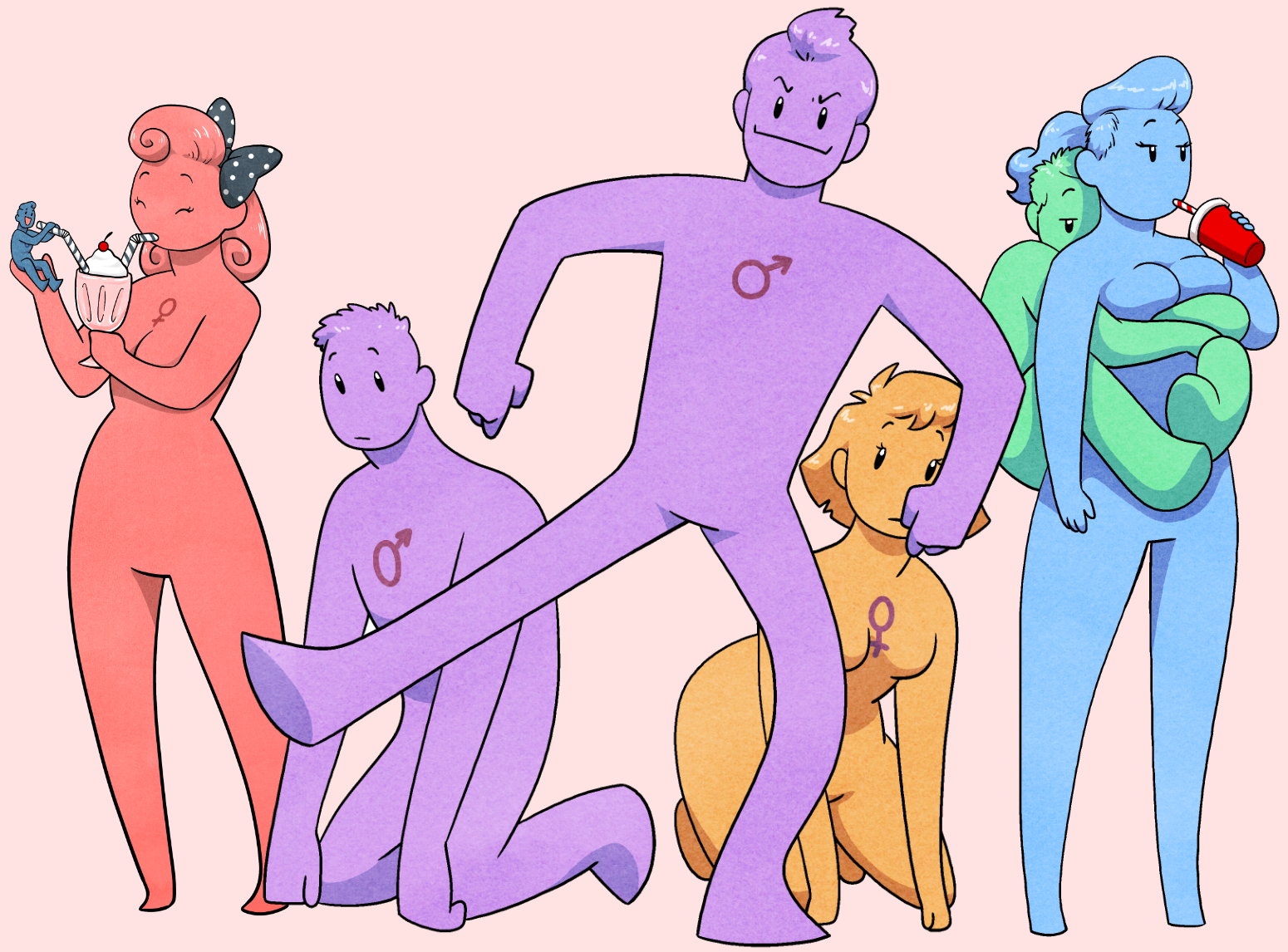
Motherfu*king Nature
Thanks to climate change not only have the giant wasp species already living in Scandinavia started spreading but giant wasps from other parts of the world have started moving in.
I’ll never forget a few summers ago when I was taking the trash out. The dumpsters were covered in wasps but I thought “I’ll be quick. Don’t disrupt them and leave” when a wasp the size of a finger flew past my head! Since then they’ve been a stable of my summers and I hate it.
Norway Denmark
4th December 2020
5 years ago #9850251
7
0
The Japanese honey-bee has an interesting defense mechanism against giant hornets. A hornet will scout out a hive to attack. The bees will lure the scout inside, and then 500 or so bees will dog-pile the thing. All the bees will vibrate as quickly as possible, raising the temperature of the ball to well over 100 degrees. The bees can survive slightly higher temperatures than the wasps, so the wasp is cooked while the bees survive. The wasp manages to kill a few of the bees in the ball (those jaws and stingers aren't just for show), but the colony survives. If the bees don't catch the wasps in time, a small army will show up and rip all the workers to shreds and there won't be enough bees to cook the hornets. From here, the hornets will gather all the bee larva to be devoured by their young.
So what you need to do if you see a giant hornet, just jump on top of it ASAP.
So what you need to do if you see a giant hornet, just jump on top of it ASAP.
5 years ago #9850511
5
0
I've read that if you regularly feed yellow jacket hornets, they will consider you a food source and aggressively defend you whenever you are outside.
{starts plans for flying army next summer}
{starts plans for flying army next summer}
5 years ago #9851655
4
0
Mark your calendars! We found one of the rare animals that Norway 'Nopes out' on. 
5 years ago #9850900
3
0
"Oh hey that looks like a huge ass bee" = Not a wasp
"Wait a minute is that a wasp??" = Not a wasp
"Who tf is flying that drone" = A mf wasp
"Wait a minute is that a wasp??" = Not a wasp
"Who tf is flying that drone" = A mf wasp
5 years ago #9850854
3
0
I saw on interesting technique that Japanese bees have used to deal with hornets:
https://youtu.be/UNroEwFxh6I
https://youtu.be/UNroEwFxh6I
5 years ago #9850277
3
0
In North America we have smaller wasps, but they HURT! BAD! I've only been stung by a bee once, and I've been stung by 2 or 3 wasps. Pain!
5 years ago #9851898
2
0
And here I thought it was just America having to deal with invasive murder hornets...
5 years ago #9850360
2
0
When I was 3, I would play in an old Jeep that did not run. (It was old in 1959) One day, I jumped in and got stung. There was a yellow jacket nest in seat. (It is a small but very aggressive wasp.) I was rescued, but suffered about 200 stings. It was a lot of pain. Did I die? I'll leave it as a cliff hanger.
Add comment: Please Sign in or create an accout to comment.



 Support the comic on
Support the comic on 























She methodically and completely wiped out the whole nest.